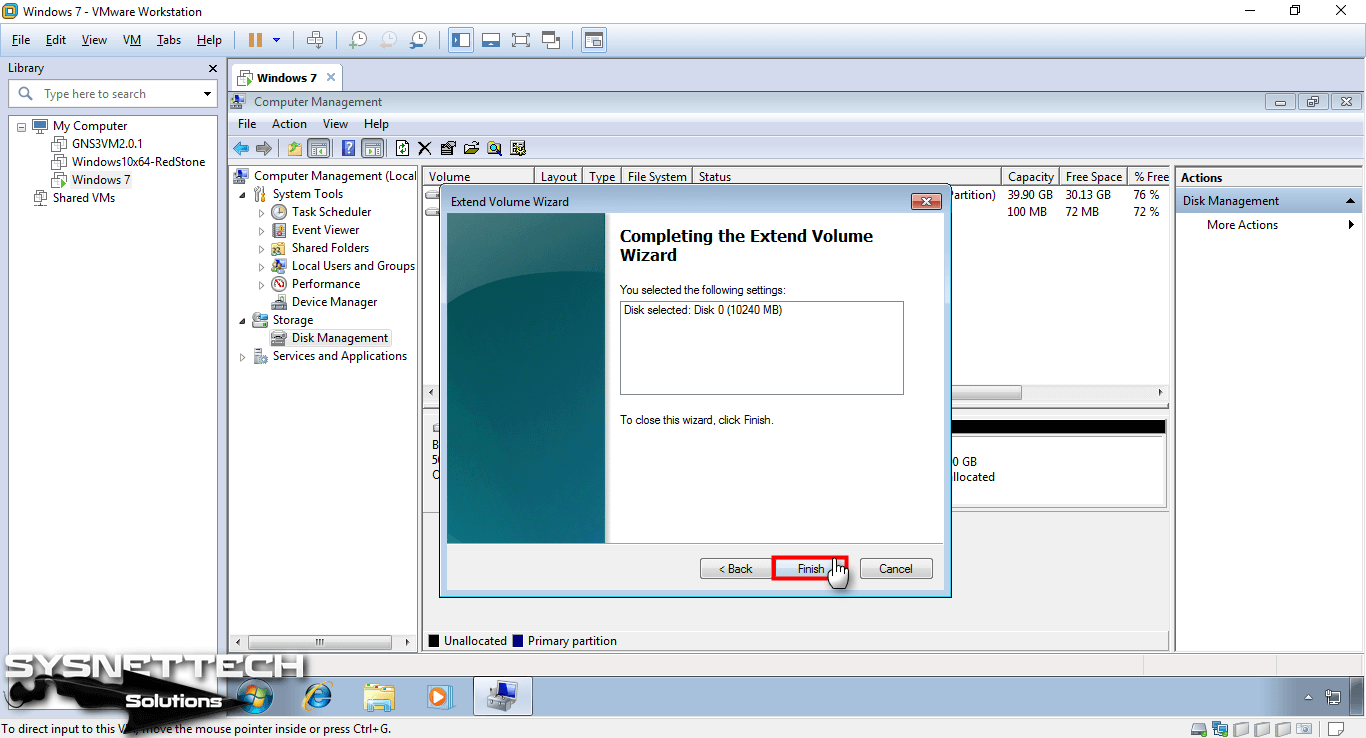

- #CREATING A VIRTUAL MACHINE WITH MORE DISK SPACE HOW TO#
- #CREATING A VIRTUAL MACHINE WITH MORE DISK SPACE SOFTWARE#
- #CREATING A VIRTUAL MACHINE WITH MORE DISK SPACE PROFESSIONAL#
- #CREATING A VIRTUAL MACHINE WITH MORE DISK SPACE FREE#
- #CREATING A VIRTUAL MACHINE WITH MORE DISK SPACE WINDOWS#
#CREATING A VIRTUAL MACHINE WITH MORE DISK SPACE WINDOWS#
In this example, I am actually going to use features built into Windows Server 2008 to extend the volume of my Windows Server 2003 Boot partition by simply attaching it to the server as a data disk, doing the work on it then reattaching it to the 2003 server. The second is expanding the boot partition to use all the new space.
#CREATING A VIRTUAL MACHINE WITH MORE DISK SPACE HOW TO#
This easier way to increase capacity was documented at: How To Expand and Extend To Increase Capacity On A Virtual Hard Disk The Easy and Fast Way–Solve the problem of “Out of Disk Space on Drive C” Forever. Note… this is much, much easier with Server 2008 and higher I finished working on an easier way to do this that does not require SCVMM. I documented the process at: How To Expand and Extend To Increase Capacity On A Virtual Hard Disk The Easy and Fast Way–Solve the problem of “Out of Disk Space on Drive C” Forever Another example, log files and other systems with lower IO throughput and resilience may be stored on a virtual disk space configured with no SSDs and with a resiliency of Parity (RAID 5 (sort of)).Revised to add merge change instructions link and link to simple way to do this using diskpart. For example, a virtual disk VHD with the operating environment of the Virtual Machine, or perhaps active SQL databases require SSDs to provide high IO throughput, and probably high resiliency of double or triple mirroring.

These virtual disk spaces can be configured with a variety of parameters which allow the storage administrator to tune the drives as required for the specific workloads. Virtual Disks (or Spaces) can be created within a storage pool. Any time VMs are used, they must be either stored on SSD drives directly or on a Virtual Disk using SSD drives in an Auto Tier configuration since Virtual Machines require the performance provided by SSD drives. This provides a mass storage system which performs similar to an array of SSD drives. Storage Spaces auto-tier is a feature where a virtual disk can be created where the disk blocks which are most active (or “hot”) are stored on the SSD drives and the slower blocks stored on the regular hard drives. $hdd_Tier = New-StorageTier -StoragePoolFriendlyName Pool1 -FriendlyName HDD_Tier -MediaType HDD

#CREATING A VIRTUAL MACHINE WITH MORE DISK SPACE FREE#
#CREATING A VIRTUAL MACHINE WITH MORE DISK SPACE PROFESSIONAL#

#CREATING A VIRTUAL MACHINE WITH MORE DISK SPACE SOFTWARE#
Highly Scalable Storage Software Defined Storage.Hyper-Converged Infrastructure Cloud Optimized Hardware.Solutions Overview Hybrid Cloud Solutions.


 0 kommentar(er)
0 kommentar(er)
